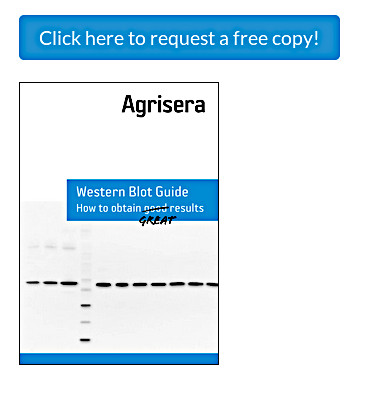| Antibodies are used in a variety of applications and contribute greatly to scientific research. However, poorly validated antibodies are a reason for the ongoing reproducibility crisis. Therefore, it should always be confirmed that the produced antibody (custom-made or catalogue) binds to the desired target protein. This can be achieved by: Direct approaches • Reliable knockout/knockdown mutant for a target protein is used • Immunoprecipitation and MS of its product, which confirms the protein identity (IP-MS) • MS analysis of visualized band Indirect approaches • Samples from specific conditions, up or down regulating expression of target protein are used • Same band is recognized by two independent antibodies to the same target protein • Target protein band is recognized in multiple species • Band of the same MW as the target protein is not present in pre-immune sample • Competition assay (neutralization assay) where antibodies are saturated using the antigen (free peptide or protein) • Target protein is confirmed to migrate at the correct MW (processing sites and modifications can affect apparent MW) • Antibody has low cross-reactivity Important note: confirmation that antibody is detecting recombinant protein does not prove its usability in endogenous sample and detection of a target protein. An orthogonal approach is a combination of direct and indirect approaches. Trusted antibodies should be evaluated using combined approaches. Validation has to be conducted separately for each technique. Antibodies validated in Western blot, require proper validation for immunolocalization studies, immunoprecipitation and other techniques. | Check Agrisera Western Blot Guide Request your free copy today! In case of any questions, you are always welcome to contact us Each antibody-antigen interaction is unique and presents different challenges in terms of antibody specificity, sensitivity and functionality. This has to be taken into account during antibody validation process. |
Latest
Is wild type a wild type?2025-12-29 Why an antibody may detect tagged protein but not endogenous one and in some cases endogenous protein but not its tagged version?
2025-10-30 Calclulated and aparent molecular weight of detected protein is different, why?
2025-10-09 How to chose right loading control for Western blot?
2025-10-06 Is an antibody going to work in a technique I am planning to use it in?
2025-09-30 Antibody reactivity to recombinant protein,does not validate antibody specificity in endogenous sample
2025-08-20 Can aggregated antibody be still used?
2025-08-15 Blot Once, Probe Twice - when such approach can be beneficial?
2025-07-31 Why should glycerol not be added, to stabilize antibodies in serum?
2025-06-27 Can methanol in transfer buffer be replaced by a less toxic alternative?
2025-05-12
Archive
- December - 2025
- October - 2025
- September - 2025
- August - 2025
- July - 2025
- June - 2025
- May - 2025
- April - 2025
- March - 2025
- February - 2025
- January - 2025
- December - 2024
- November - 2024
- September - 2024
- July - 2024
- June - 2024
- May - 2024
- March - 2024
- February - 2024
- December - 2023
- November - 2023
- September - 2023
- July - 2023
- May - 2023
- March - 2023
- January - 2023
- December - 2022
- November - 2022
- October - 2022
- September - 2022
- August - 2022
- June - 2022
- May - 2022
- March - 2022
- February - 2022
- January - 2022
- November - 2021
- October - 2021
- August - 2021
- June - 2021
- May - 2021
- April - 2021
- March - 2021
- February - 2021
- January - 2021
- December - 2020
- November - 2020
- October - 2020
- September - 2020
- August - 2020
- July - 2020
- June - 2020
- May - 2020
- April - 2020
- March - 2020
- January - 2020
- November - 2019
- October - 2019
- March - 2019
- April - 2017
- February - 2017
- May - 2016
- February - 2014
- September - 2013
- December - 2010
